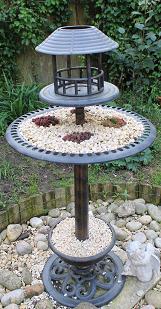






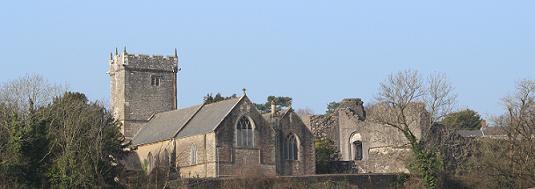 Bridgend
the town by the river
Bridgend
the town by the river

Aubrietia
Without question, one of my favourite rockery
perennials is the showy spring flowering Aubrietia. But, is it just a
rockery perennial? Absolutely not, this is one spring flowering perennial
that can be used in any part of the garden! It makes a great low growing
perennial to use as a ground cover or in groupings or for spot colour in
landscape beds.
Aubrietia only grows about six inches high and may grow several feet in
width. When it's used in rockeries the plants may cascade over the rocks for
up to two feet or more. Plant in full sun for flowering at it's best. It
will grow quit happily in any soil type.
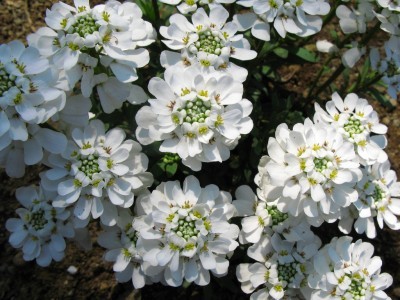
Candytuft
The candytuft plant (Iberis sempervirens) is a European native. The 12- to 18-inch beauty is a flowering, evergreen perennial with a few must do’s for appropriate candytuft care and continued performance.
Candytuft care involves planting in well draining, alkaline soil in a sunny location as the candytuft plant won’t grow in shade or wet soil. Acidic soil may need amendments such as lime to produce the candytuft plant. Growing candytuft is worth the effort as the delicate flowers appear in early spring through summer, often re-blooming in Autumn.
The candytuft flower is usually white, but some cultivars have pink or lilac blooms. This plant does well in gravelly soil, making it a perfect small specimen for a sunny rock garden or border planting.
Once blooms of the candytuft flower are spent, cut the entire candytuft plant back to ground level to avoid woodiness of the stems. This should be done at least every other year to prevent this short, blooming beauty from becoming too tall with spindly growth. The candytuft plant is actually a woody plant, but is most attractive when treated as an herbaceous perennial.
Growing candytuft from seeds or cuttings is a money-saving way to have more of the aesthetically pleasing plants. Sow seeds of the candytuft flower directly into flower beds when soil has warmed to about 70 F. (21 C.). Softwood cuttings of existing plants propagate easily during mid-summer for more candytuft flowers.

Bergenia cordifolia
They are clump-forming, rhizomatous, evergreen perennials with a spirally arranged rosette of leaves 6–35 cm long and 4–15 cm broad, and pink flowers produced in a cyme. The leaves are large, leathery, ovate or cordate, and often have wavy or saw-toothed edges. For most of the year, the leaves have a glossy green colour, but in cooler climates, they turn red or bronze in the Autumn. The flowers grow on a stem similar in colour to a rhubarb stalk and most varieties have cone-shaped flowers in varying shades of pink. These can range from almost white to ruby red and purple.
The common names for Bergenia are pigsqueak (due to the sound produced when two leaves are rubbed together), elephant's ears (due to the shape of the leaves) and large rockfoil.
Bergenia are hardy plants that can grow in climates with extreme temperature ranges from about −35 °F (−37 °C) to 115 °F (46 °C). They prefer sun but will grow in shady areas as well. Plants can grow to about 24 in (61 cm) tall and 24 in (61 cm) wide. They do well in most soils, but moist, humus-rich soil is preferable. Exposure and dry soils tend to stunt growth, but can enhance the winter leaf colours. In areas with cold, strong winter winds, protection from the wind may be required. They are propagated by division or rooted rhizome sections.
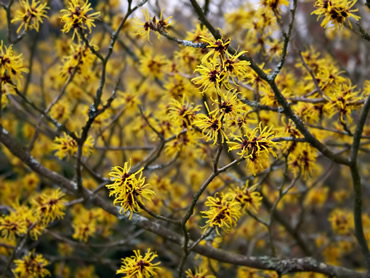
Witch Hazel
Hamamelis is a winter-flowering shrub, commonly known as witch hazel. Its spicy fragrance and spidery flowers in yellow, orange and reds make it a must for the winter garden.
Witch hazels can thrive in many gardens, given the right conditions and care.
An open, sunny position is best, as plants become straggly in constant shade, Avoid exposed and windy positions.
Young witch hazels can be damaged by hard frosts, so be prepared to protect young plants with a couple of layers of protection in their first few years.
Witch hazels need a well drained soil with an adequate supply of moisture. A light soil with plenty of added organic matter, such as well-rotted manure or compost, is best.
An acid to neutral soil is preferred (pH 4.5-6.5). They are very unlikely to tolerate shallow chalky soils.
Share with your friends on Facebook or Twitter. Just Click the link below.
![]() Facebook
Facebook
![]() Twitter
Twitter
Advertisements

42 Dunraven Place, Bridgend
Contact: Mike 07840 287 383
web site here

Bridgend Sandwich Bar.
Est: 1940
Copyright BridgendPPF.com 2017
Gardening
Tips and Tricks
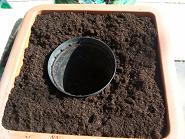
To change centre piece during the season plant an empty pot in the
centre display
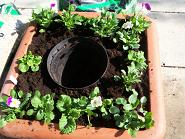
Then plant the bedding around the pot.
Pansy Plentifull
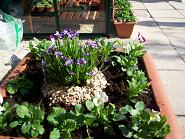
Place a potted plant in the centeral container
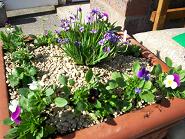
When the centre plant finishes flowering replace with another that is in
bloom.( Sysirinchium 'E K
Balls' )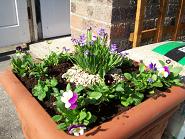
Has
that old bird bath had it's day. Why not plant it up with Alpines.
Don't forget the drainage holes.
